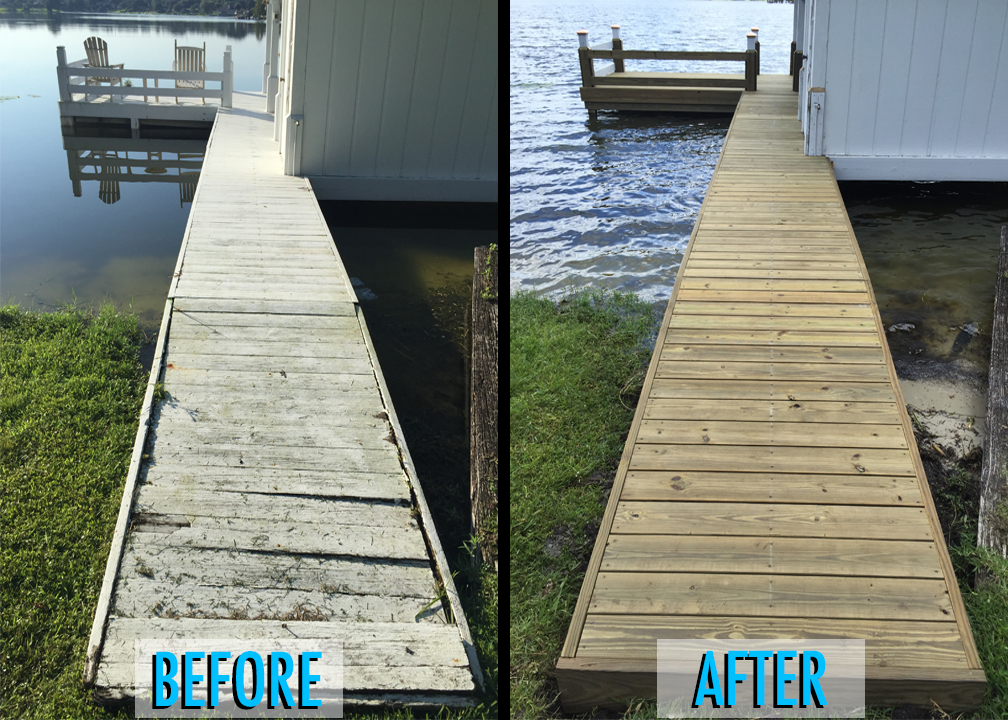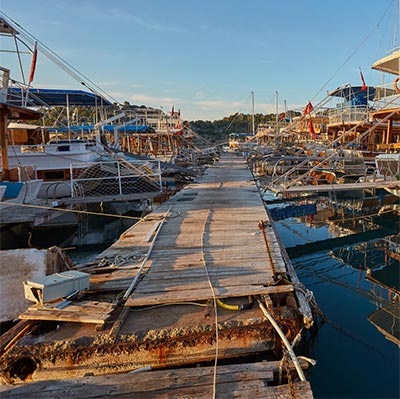Common Issues That Lead to Costly Dock Repairs
Common Issues That Lead to Costly Dock Repairs
Blog Article
Exactly How to Address Common Dock Repair Work Issues for Safe Water Tasks

Identifying Common Dock Issues
Determining usual dock concerns is crucial for keeping the functionality and safety of your waterside residential property. Normal inspections can help reveal problems prior to they end up being severe, guaranteeing both the durability of the dock and the safety and security of those who utilize it. One widespread problem is loose or corroded bolts. Gradually, screws, screws, and various other bolts can come to be loose due to consistent direct exposure to water and climate components, leading to structural instability.
An additional usual issue is the degradation of flotation protection devices. These devices are necessary for maintaining the dock resilient, and any type of damage or slits can create the dock to checklist or sink. Regularly checking for leaks or water logged drifts can preempt more significant concerns.
Furthermore, algae and barnacle accumulation on the dock's surface area can produce harmful and slippery conditions. This biofouling not only poses a threat to individuals yet can additionally accelerate the degeneration of the dock materials.
Finally, checking for signs of rust on steel parts is necessary. Rust can endanger the integrity of the dock's framework, making it unsafe. By regularly identifying these common dock problems, you can make sure that your dock stays safe and useful for years to come.
Repairing Rotting Timber
When dealing with the issue of deteriorating timber on your dock, it is necessary to act quickly to stop further degeneration. Begin by completely evaluating the whole framework to determine all impacted locations. Make use of a screwdriver to penetrate the wood; if it sinks in quickly, the wood is likely rotted and needs immediate interest.
Be certain to cut back to healthy, strong wood, guaranteeing you eliminate all jeopardized material. After elimination, treat the remaining wood with a wood preservative to stop future rot.
Following, replace the gotten rid of areas with marine-grade lumber or pressure-treated wood, which are extra resistant to water damages. Secure the new items with stainless-steel or galvanized bolts to avoid deterioration. Furthermore, applying a waterproof sealer to the brand-new timber can provide an additional layer of protection.
Safeguarding Loosened Boards
Exactly how do you ensure your dock remains practical and risk-free for all its customers? One vital aspect is protecting loose boards, which can otherwise present substantial dangers. Loosened boards not just increase the risk of stumbling however can likewise compromise the structural honesty of the entire dock.

For reinstallation, make use of stainless or galvanized steel screws, as these products offer superior resistance to deterioration in marine settings. Guarantee the screws are long sufficient to permeate deep right into the underlying assistance structure, however not as long that they stick out with the dock's surface area. Pre-drilling pilot holes can assist avoid the timber from splitting.
Lastly, keep a routine evaluation schedule to determine and deal with any kind of new concerns without delay. By protecting loose boards successfully, you contribute to the Read Full Report total safety and longevity of your dock, making it a reputable platform for water activities.
Stabilizing Unsteady Pilings
Guaranteeing the stability of unsteady pilings is paramount to preserving a useful and secure dock. Unstable pilings can endanger the entire framework, posturing substantial dangers to customers and potentially resulting in costly fixings. The first action in maintaining these vital components is a complete examination. Take a look at the pilings for indicators of rot, damages, or shifting. Make use of a level to inspect for upright positioning and guarantee they are driven deep enough right into the substratum to provide adequate assistance.
If the pilings are discovered to be unpredictable, one reliable method for support is using added bracing. Cross-bracing with treated lumber or galvanized steel can dramatically enhance stability. Anchor the dental braces safely to both the pilings and the dock structure to disperse loads uniformly.

Routine maintenance and regular review of the pilings' security are essential to ensuring lasting dock safety and performance.
Changing Rusty Equipment
Addressing unstable pilings is just one aspect of keeping a dock's honesty; one more essential problem is replacing rustic hardware. Over time, exposure to moisture and salt can result in the oxidation and deterioration of bolts, brackets, and screws, compromising the entire framework's safety. Normal examination for rust is important, especially after severe weather or seasonal modifications.
When rusty hardware is identified, immediate action is required. Begin by choosing marine-grade stainless-steel or galvanized equipment, both designed to stand up to the severe aquatic environment. Make sure that you have the appropriate devices, such as wrenches and screwdrivers, to safely get rid of the old, corroded items without triggering further damage to the dock.
After getting rid of the corroded hardware, thoroughly clean the influenced locations to eliminate any type of residual corrosion or particles. Use a rust-inhibiting primer to exposed steel surface areas before mounting the brand-new equipment. Tighten up all fixtures securely to avoid future loosening, and periodically examine the installations to ensure recurring security.
Replacing rustic hardware not just extends the dock's life expectancy but additionally significantly boosts the security of water activities. By proactively taking care of corrosion, you secure both the structure and its individuals, ensuring a delightful and safe waterfront experience.
Final Thought
Normal examinations and maintenance are vital to address usual dock fixing concerns and make sure risk-free water tasks. Such proactive procedures contribute to the general security and functionality of dock frameworks, cultivating a secure setting for water-based activities.
Guaranteeing the safety of water tasks hinges substantially on the proper upkeep and repair of anchors (Dock Repairs). These devices are vital for keeping the dock resilient, and any damages or punctures can cause the dock to listing or sink. By regularly determining these typical dock issues, you can guarantee that your dock stays functional and safe and secure for years to come
Making certain the stability of unsteady pilings is paramount to keeping a click to investigate safe and functional dock.Routine evaluations and upkeep are essential to resolve typical dock repair problems and make sure risk-free water activities.
Report this page